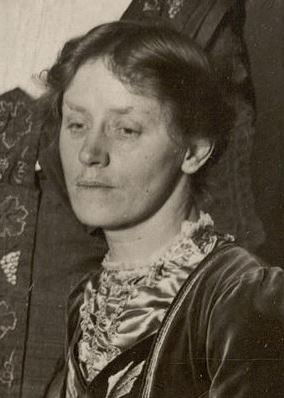Helena Swanwick facts for kids
Quick facts for kids
Helena Maria Lucy Swanwick
CH |
|
|---|---|

Helena Swanwick, taken at a debate between suffragists and anti-suffragists in October 1909
|
|
| Born |
Helena Maria Lucy Sickert
30 January 1864 |
| Died | 16 November 1939 (aged 75) Maidenhead, Berkshire, England
|
| Other names | Helena Sickert |
| Alma mater | Girton College, Cambridge |
| Known for | Suffragist and Pacifist |
Helena Maria Lucy Swanwick (born Sickert, 1864–1939) was an important British activist. She was a feminist who believed in equal rights for women. She was also a pacifist, meaning she was against war and violence.
Her book, I Have Been Young, tells her story. It describes her work for women's right to vote (suffrage) and her efforts to stop war, especially during World War I. Helena Swanwick's name is honored on a statue in London. It's the statue of Millicent Fawcett in Parliament Square, which celebrates women who fought for the right to vote.
Contents
Helena's Early Life and Education
Helena was born in Munich. Her father, Oswald Sickert, was a painter. Her brother, Walter Sickert, also became a famous painter.
When Helena read The Subjection of Women by John Stuart Mill, it changed her views. This book made her want to fight for women's rights. She became a strong feminist.
Helena studied at Girton College, Cambridge. After college, she taught psychology at Westfield College in 1885. In 1888, she married Frederick Swanwick, a lecturer at Manchester University.
Helena's Fight for Women's Rights
Helena Swanwick worked as a journalist. She wrote articles for the Manchester Guardian newspaper.
In 1906, she joined the National Union of Women's Suffrage Societies (NUWSS). This group worked for women's right to vote using peaceful methods. She did not join the Women's Social and Political Union (the suffragettes) because they sometimes used violence.
Helena quickly became a leader in the NUWSS. From 1909 to 1912, she was the editor of their weekly newspaper, The Common Cause.
Even though she believed in peace, she defended the suffragettes. In 1910, some suffragettes were arrested during a protest. Helena wrote that the Prime Minister, H. H. Asquith, was to blame. She said his "continual evasions" (avoiding the issue) caused the problem. She stayed on the NUWSS Executive committee until 1915. She was also a member of the Labour Party.
Helena's Work for Peace
When World War I started, Helena began to campaign for peace. She wanted leaders to talk and end the war. In 1914, she joined the Union of Democratic Control. This group worked for a fair and open foreign policy.
In 1915, Helena and other suffragists left the NUWSS. They disagreed with the group's decision not to send delegates to an international women's peace meeting. This meeting was held at the Hague.
Helena was one of the people who helped start the Women's International League for Peace and Freedom. This group worked for peace around the world.
Some people did not agree with her pacifist views. For example, G. K. Chesterton criticized her in a newspaper. He said that people who commit crimes should be punished, just as countries that start wars should face consequences.
Later Life and International Efforts
After World War I, Helena continued her work for peace. She believed in working with other countries. She disagreed with the harsh terms of the Treaty of Versailles, which ended the war. She thought it was too hard on Germany.
Helena served as a delegate for the United Kingdom at the League of Nations. This was an organization created to prevent future wars.
In 1931, she received an honor called the Order of the Companions of Honour. However, she became sad in the 1930s. She worried about the rise of fascism and the growing threat of war. Her husband died in 1934, which deepened her sadness.
In November 1939, World War II began. Helena Swanwick died in her home in Maidenhead, Berkshire, that same month.
Helena Swanwick's Books
- The Future of the Women's Movement (1913)
- Builders of Peace, Being Ten Years History of the Union of Democratic Control (1924)
- Labour's foreign policy : what has been and what might be (1929)
- I Have Been Young, autobiography (1935)
- The Roots of Peace: A Sequel to Collective Insecurity, Being an Essay on Some of the Uses, Condition (1938)

